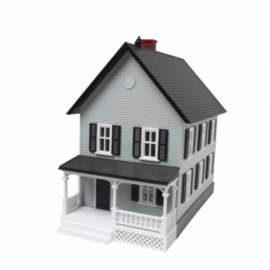
How to calculate mortgage payments?

A mortgage is a loan or lien offered by a bank or lending institution that owns a property purchased by an individual homeowner. Obviously homes are expensive and the typical person cannot afford to buy one in full. As a result, they must take out a loan, aka a mortgage, from a bank or lending institution. To qualify for a loan person should have an income, good credit, and must be able to pay a percentage of the home's value in the form of a down payment.
When the person buys the property he or she will pay the mortgage lender at least 20% of the property's value. Failure to pay at least 20% of the house's total value will result in additional known as a PMI or a private mortgage insurance. This is simply an added cost to ensure the lender that the individual will cover a default or pay an additional amount for a failure to offer a large down payment.
Traditional mortgages are designed so that an individual pays the lender a monthly percentage of the remaining debt. In addition to paying off the loan, the lending institution will charge the person an interest rate. Typically this interest rate is around 5%; the monthly payments therefore are collected by the lending institution and used to chop-off the remaining debt of both the principal loan and the interest payments.
the mortgage is a long-term loan that typically is offered between a 20 or 30 year period. To calculate mortgage payments, the aforementioned components are all entered into the formula.



















